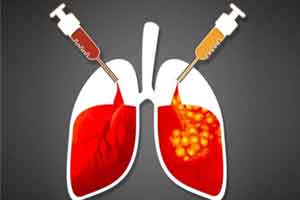- Home
- Editorial
- News
- Practice Guidelines
- Anesthesiology Guidelines
- Cancer Guidelines
- Cardiac Sciences Guidelines
- Critical Care Guidelines
- Dentistry Guidelines
- Dermatology Guidelines
- Diabetes and Endo Guidelines
- Diagnostics Guidelines
- ENT Guidelines
- Featured Practice Guidelines
- Gastroenterology Guidelines
- Geriatrics Guidelines
- Medicine Guidelines
- Nephrology Guidelines
- Neurosciences Guidelines
- Obs and Gynae Guidelines
- Ophthalmology Guidelines
- Orthopaedics Guidelines
- Paediatrics Guidelines
- Psychiatry Guidelines
- Pulmonology Guidelines
- Radiology Guidelines
- Surgery Guidelines
- Urology Guidelines
Recurrent Conjunctivitis which ultimately turned out to be MDR-TB

A 15yr old girl from Nerul was experiencing discomfort and non-resolving severe red eyes for over 15 days. Two months prior to this, she had experienced the same condition, which had settled within three days after her local doctor had prescribed a course of eye drops. Due to the reoccurrence of her situation she was referred to Dr. P. Suresh, Consultant and Head of Ophthalmology Dept., Fortis Hospital Mulund.
Upon examination, Dr. P Suresh was of the opinion that the eyes looked atypical for Viral or Bacterial Conjunctivitis that commonly occurs due to changes in the weather, especially during the monsoons. He noticed severe redness associated with multiple small bumps (nodules). In addition, he also noticed redness in the left nostril with crusts as well as redness around the mouth. According to the parents of the young patient, the nose and mouth had begun to turn red four days after her eyes had reddened. It was then that Dr P Suresh suspected a rare type of allergic reaction (hypersensitivity). He recommended the patient to undergo a chest X-ray due suspicions of a hidden chest infection in the form of Pneumonia; the patient however showed no symptoms.
Commenting on the case at hand, Dr. P Suresh, Consultant and Head of Ophthalmology Dept., Fortis Hospital Mulund, said, “The allergic reaction on the soft exterior lining of the eyes, nose and mouth are generally accompanied by skin rashes and represent reaction to drugs, but is rarely Pneumonia. Our patient did not have any skin rashes nor took any oral medications. It was possible that the eyes became red due to antibiotic drops which were administered earlier. However, it does not explain the multiple nodules or the involvement of the nose and mouth redness”.
The results of the X-ray revealed a large mass in the chest; to rule out other uncertainties, CT scan of the chest was immediately performed which also confirmed the presence of a large chest mass. The patients’ parents then highlighted that they felt that their daughter had lost considerable amount of weight but ignored the fact as they felt it was irrelevant and merely caused due to a loss in appetite. Dr. P Suresh referred the patient to Dr Anita Mathew, Infectious Disease Specialist, at the hospital, who arranged for a CT Guided Biopsy. The specimen was then analyzed, using the GeneXpert test, which is a molecular test to detect TB bacteria, and was also subjected to Histopathological examination. The results of the test confirmed the presence of MDR-TB; Dr Mathew immediately put the patient on a course of MDR-TB medications that would be administered for about 2 years.
The other causes for atypical red eyes were investigated and found out to be negative. In all the probability the red eyes represented an unusual hypersensitivity manifestation of underlying MDR-TB with altered immunity and helped detect the disease before it spread. Post the commencement of treatment and continued administration of steroid eye drops, the redness of the eyes slowly resolved.
Speaking about the case Dr Anita Mathew, Infectious Disease Specialist, Fortis Hospital, Mulund, says, “If it wasn’t for Dr Suresh’s accurate observations, the young patient would have been diagnosed differently and the family would have had a different and difficult situation at hand. MDR-TB is slowly becoming a common concern; only accurate diagnosis and appropriate medical intervention can save lives”.
Dr P. Suresh further adds, “TB of the eye (known as Ocular TB) has been diagnosed in other rare cases, however we have never come across such a case in particular with dramatic redness with multiple nodules. Limited inflammation to eyes, nose and mouth was reported only once in the literature due to bacterial pneumonia; we were surprised to see MDR TB in our patient. On this note, we urge people to come forward and visit their doctor whenever medical issues arise so that they can be diagnosed appropriately and treated in time”.

Disclaimer: This site is primarily intended for healthcare professionals. Any content/information on this website does not replace the advice of medical and/or health professionals and should not be construed as medical/diagnostic advice/endorsement or prescription. Use of this site is subject to our terms of use, privacy policy, advertisement policy. © 2020 Minerva Medical Treatment Pvt Ltd